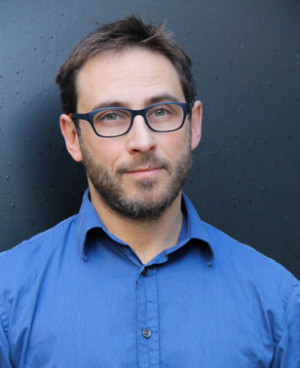Fabrice Cahen
tells us about the question of infertility in demographic history

Fabrice Cahen joined INED as a researcher in September 2013. He works on reproduction and population politics and policy and their intellectual foundations.
(Interview from February 2014)
Why study sterility? How is it related to your earlier research, on abortion?
It is estimated that 15% of couples are temporarily or definitively unable to conceive. Though the social sciences have been interested in the question for a few years, they have not taken into account the fact that the battle against sterility began well before the 1970s; i.e., before "modern" medically assisted reproduction. We have remarkable French historiographical studies of reproduction and reproduction failure in the modern period, but most pioneering studies on the contemporary period have been done outside France (in Great Britain, for example, with studies that combine social history of medicine and gender history, and historical demography studies of infertility factors and prevalence). There is still much to be explored and clarified in the history of infertility and how the question has been handled in a country as concerned as France is about its population (a history to be viewed, of course, from a comparative, cross-national perspective).
My specific focus is how reproductive difficulties have been
constructed as a problem that requires solutions (either preventive
or therapeutic), to the point of providing full health insurance
coverage for medically assisted reproduction. For a long time the
primary considerations were population quantity, the quality of the
race, how to preserve existing gender roles-and these
preoccupations have left lasting marks. This research will perhaps
also help us get a clearer picture of what exactly makes it so
difficult for a sizable number of professionals in France to
imagine making assisted reproduction technology (ART) available to
groups other than heterosexual couples with medical
indications.
How do you work on such personal, taboo subjects? What sources are there?
In my thesis on illegal abortion in France in the twentieth century, I was continually confronted with the scarcity of available empirical material. I acquired a reflex of using the most strategic corpuses (namely those found in the relevant ministries and administrations), which inform on how the state views the subject, while gathering all sorts of complementary written sources (association archives, personal writings, etc.). Identifying and going through these materials is long and costly but necessary. Here I’ve benefited from the fact that several archives left by practitioners engaged in the battle against sterility, notably at the CECOS (Centre d’Etude et de Conservations des Oeufs Humains et du Sperme), have recently been opened to researchers. Numerous interviews with physicians represent an additional source.
What is emerging from your early research?
My first investigations suggest that independently of the limited therapeutic possibilities, efforts to combat infertility were slowed because inability to conceive was not seen to have significant demographic impact. The 15%-of-couples figure had already been put forward by the most influential authors of the Belle Epoque, who concluded that this did not justify mobilizing public funds. As for the physicians calling for specifically targeted policies, despite their "biopolitical" arguments (playing the positive card of fighting sterility rather than the relatively negative anti-abortion one), they seem to have laboured without any material support for a long time-meaning without any real external oversight either-and to have had a hard time convincing the population that treatment of conception difficulties could be beneficial, at least psychologically. However, in the interwar period, pioneers on the issue began developing a set of diagnostic and treatment practices, and raising questions-already- about the relevance of medicalizing and technicalizing reproduction. We still do not know much about these fascinating biomedical practices.
